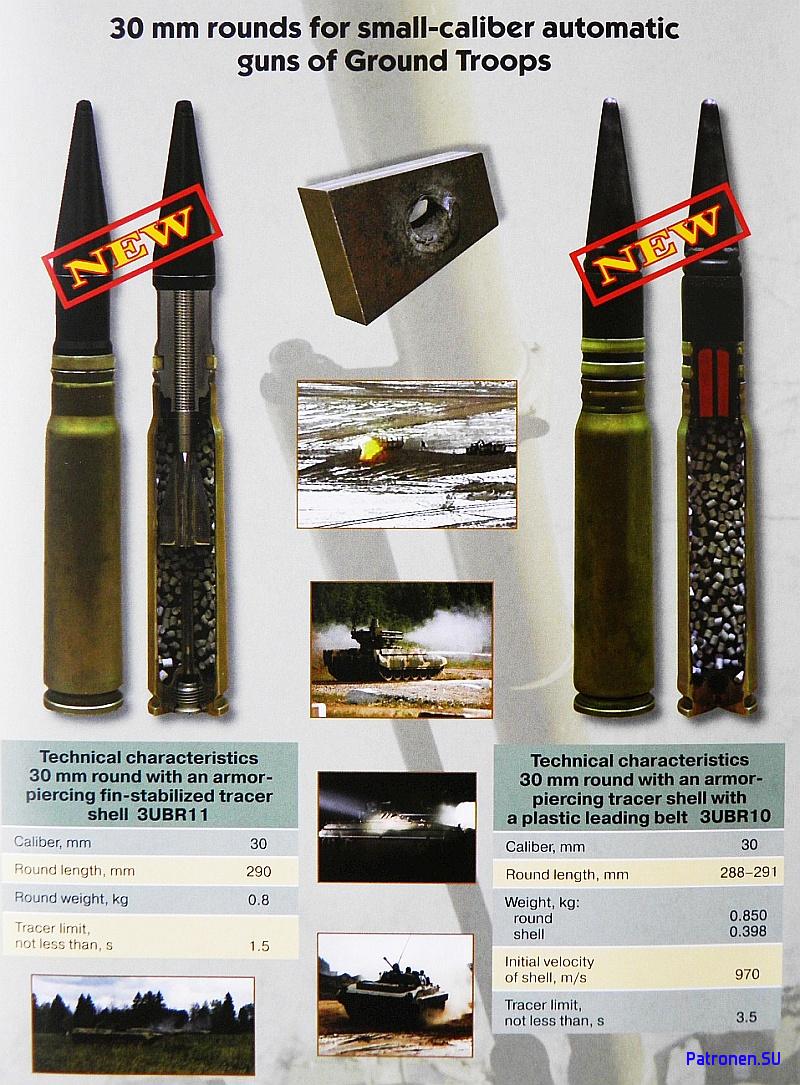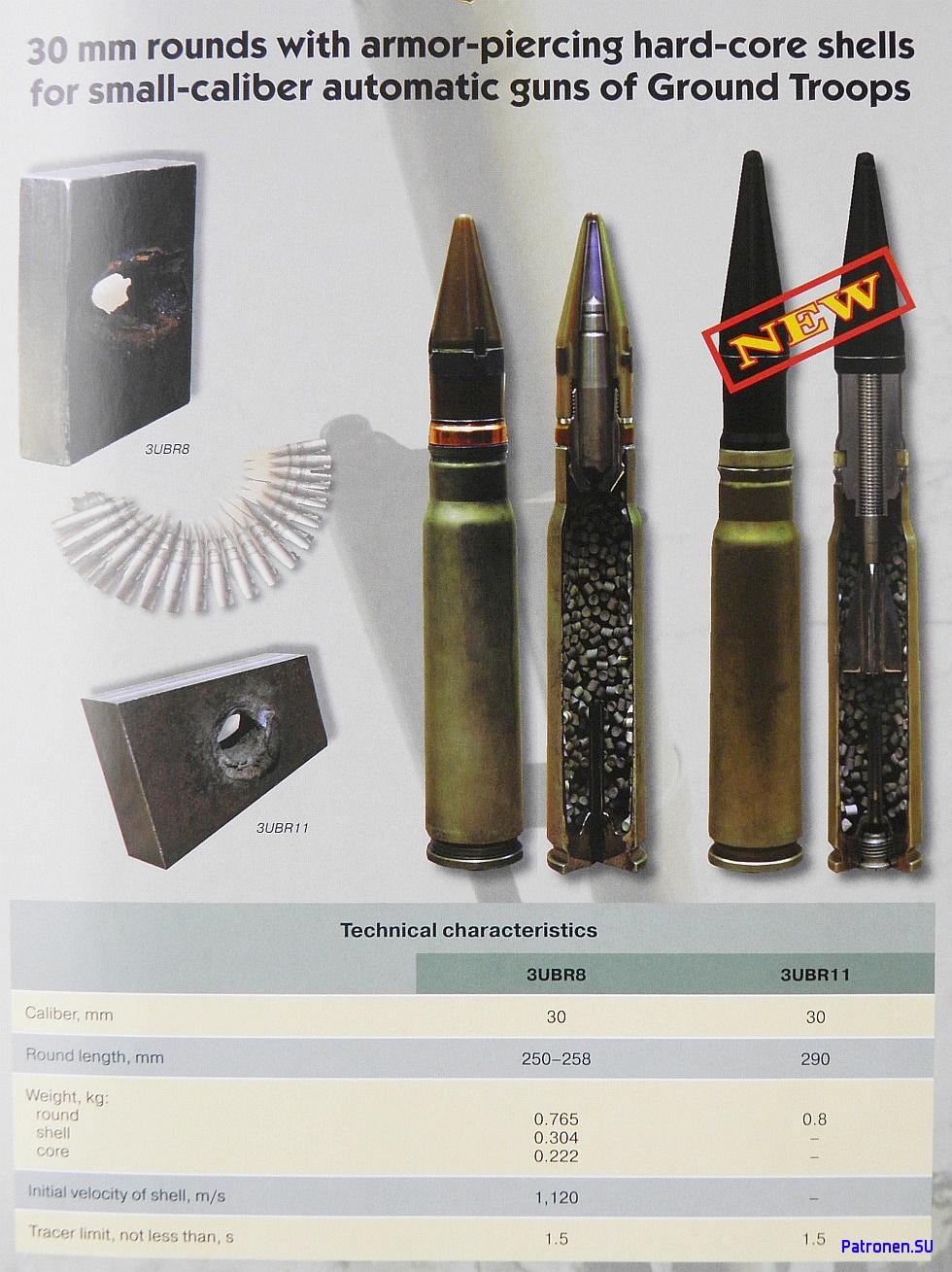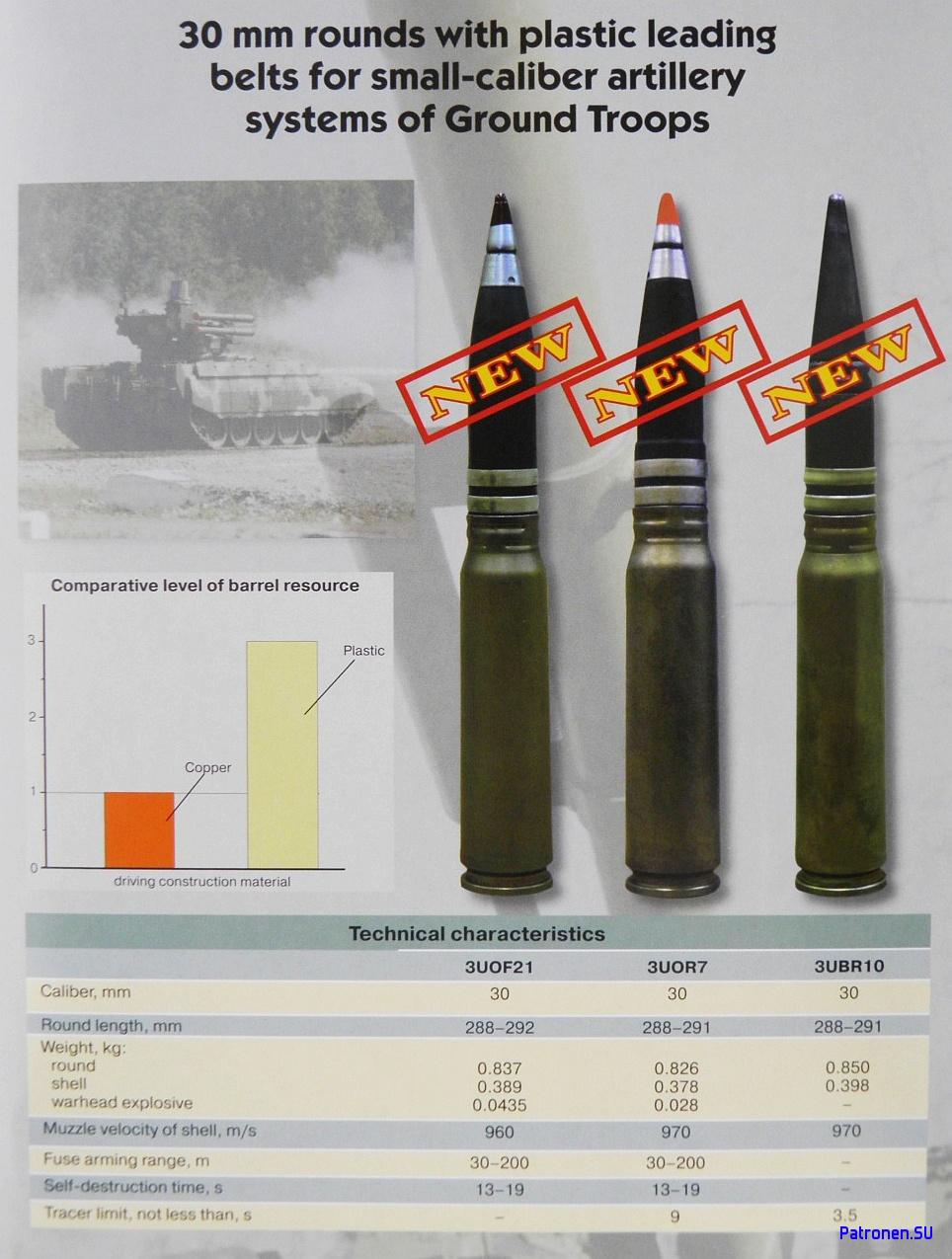Mike E wrote:We need a Ruble figure to be accurate; and one from a Russian order.
Thanks though, $1.6 is an interesting figure.
Who's 'we', your friends at the Pentagon, Mr. Amerikanski spy

Mike E wrote:We need a Ruble figure to be accurate; and one from a Russian order.
Thanks though, $1.6 is an interesting figure.




GarryB wrote:A long barrel 120mm rifled gun/mortar barrel would make a lot of sense, though targets engaged with high velocity rounds would be disappointed... but a guided 120mm shell would be effective enough against most targets.
The ability to use 120mm mortar rounds, 122mm guided rounds and of course 120mm shells out to about 14km makes it a very potent weapon for use against a range of battlefield targets... add a 40mm grenade launcher and a 23mm 6 barrel gatling and you have an excellent fire power support vehicle for tanks and infantry. (BMPT)
A conventionally loaded 105mm or 76mm gun would be overkill against most AFVs, while being to weak anbd low ranged to destroy MBTs, so it's inferior to both autocannons(mire expensive, heavier, less ammo, lower ROF) and high calibre cannons. However if a compact automatic 76mm gun was created(OTO melara is far too large) was created to be able to be installed on a fully armored platform without making the turret's height too large, and also used telescopic ammo, the vehicle with such a gun would make a formidable BMPT having even more destructive capability and range compared to a 30-57mm armed one, it's only disadvantage:having less ammo. Such an AFV would be superior in suppression capability to anything armed with a 2A70.Cyrus the great wrote:I wish the Kurganets and the Boomerang had something like the OTO Melara 76mm with an unmanned turret bustle and used 20mm autocannons on the sides just like on the Slovakian T-72, while somehow accommodating 4 Kornet EMs as well. You could destroy any non-tank based IFV in one shot with the 76mm. The South Africans put the 76mm gun on the 28 ton Rooikat with 48 rounds inside the vehicle, but I imagine that this could go up to 70 rounds in an unmanned turret. OTO Melara also developed a 60mm hyper-velocity gun that should be able to hold 80-90 rounds in an unmanned turret.
The T-14 Armata could have an IFV variant with an engine at the front and a gun just as powerful as the OTO Melara 76mm with the exact same setup as the other vehicles. This variant would surely be more survivable and better armed than the 42 ton T-15 IFV. One of the reasons that I like the Kurganets and the Boomerang so much is because they're amphibious, but if you needed heavy armour, why not use a 55 ton tank based IFV?
What would you guys think of Kurganet and Boomerang variants fitted with 105mm guns using unmanned turret bustles with at least 32 rounds? I know the Russians wouldn't use the 105mm themselves but lets imagine that a foreign government did on Russian platforms... how effective do you think these vehicles would be?
Why mount a weapon almost exclusively designed for indirect fire to a vehicle designed for direct confrontation. Even if the BMPT needed indirect fire capability, a heavy AGL would be enough becouse it wouldn't need such a large range. Mortars belong to to cheap light mobile disposable platforms.GarryB wrote:A long barrel 120mm rifled gun/mortar barrel would make a lot of sense, though targets engaged with high velocity rounds would be disappointed... but a guided 120mm shell would be effective enough against most targets.
The ability to use 120mm mortar rounds, 122mm guided rounds and of course 120mm shells out to about 14km makes it a very potent weapon for use against a range of battlefield targets... add a 40mm grenade launcher and a 23mm 6 barrel gatling and you have an excellent fire power support vehicle for tanks and infantry. (BMPT)

KomissarBojanchev wrote:A conventionally loaded 105mm or 76mm gun would be overkill against most AFVs, while being to weak anbd low ranged to destroy MBTs, so it's inferior to both autocannons(mire expensive, heavier, less ammo, lower ROF) and high calibre cannons. However if a compact automatic 76mm gun was created(OTO melara is far too large) was created to be able to be installed on a fully armored platform without making the turret's height too large, and also used telescopic ammo, the vehicle with such a gun would make a formidable BMPT having even more destructive capability and range compared to a 30-57mm armed one, it's only disadvantage:having less ammo. Such an AFV would be superior in suppression capability to anything armed with a 2A70.Cyrus the great wrote:I wish the Kurganets and the Boomerang had something like the OTO Melara 76mm with an unmanned turret bustle and used 20mm autocannons on the sides just like on the Slovakian T-72, while somehow accommodating 4 Kornet EMs as well. You could destroy any non-tank based IFV in one shot with the 76mm. The South Africans put the 76mm gun on the 28 ton Rooikat with 48 rounds inside the vehicle, but I imagine that this could go up to 70 rounds in an unmanned turret. OTO Melara also developed a 60mm hyper-velocity gun that should be able to hold 80-90 rounds in an unmanned turret.
The T-14 Armata could have an IFV variant with an engine at the front and a gun just as powerful as the OTO Melara 76mm with the exact same setup as the other vehicles. This variant would surely be more survivable and better armed than the 42 ton T-15 IFV. One of the reasons that I like the Kurganets and the Boomerang so much is because they're amphibious, but if you needed heavy armour, why not use a 55 ton tank based IFV?
What would you guys think of Kurganet and Boomerang variants fitted with 105mm guns using unmanned turret bustles with at least 32 rounds? I know the Russians wouldn't use the 105mm themselves but lets imagine that a foreign government did on Russian platforms... how effective do you think these vehicles would be?
As for the 105mm, the russians already figured out how to install a 125mm gun, so why use a weaker calibre. The 105's only advantage would be some weight saving to add more armor although IDK how lighter it is compared to the 125mm.
I definitely agree that a 120mm mortar gun would be incredibly effective in a BMPT vehicle, but I would think that a hypervelocity gun would be more effective against armour while carrying 7-9 troops.
) was created to be able to be installed on a fully armored platform without making the turret's height too large, and also used telescopic ammo, the vehicle with such a gun would make a formidable BMPT having even more destructive capability and range compared to a 30-57mm armed one, it's only disadvantage:having less ammo. Such an AFV would be superior in suppression capability to anything armed with a 2A70.
As for the 105mm, the russians already figured out how to install a 125mm gun, so why use a weaker calibre. The 105's only advantage would be some weight saving to add more armor although IDK how lighter it is compared to the 125mm.
Why mount a weapon almost exclusively designed for indirect fire to a vehicle designed for direct confrontation. Even if the BMPT needed indirect fire capability, a heavy AGL would be enough becouse it wouldn't need such a large range. Mortars belong to to cheap light mobile disposable platforms.
I don't think anyone would regard as reasonable and expect an IFV armed with a 76mm gun to be tasked with destroying modern tanks with its main gun, and this is precisely why I mentioned the inclusion of the latest Kornet variant [EM] as part of the weapon system; side mounted 20mm autocannons with at least 600-700 rounds would solve any perceived shortage of ammo; the Rooikat 76mm has 8 ROF; the height of the Rooikat turret roof is 2.6m, which is comparable to the Boomerang with 2.4m.
The 2S25 Sprut SD greatly intrigues me because it can carry 40 rounds, but what kind of velocity does it produce? I hope it's true, but I read somewhere that it has a velocity of 1800m/s, and I presume that if it was fitted to Kurganets-25 and Boomerang in an unmanned turret bustle with 40 rounds, you would be able to accommodate 7-9 personnel -- which would be incredible.
In addition to an incredibly powerful main gun, 600-700 20mm rounds and Kornet EM would make these vehicles the most deadly on the battlefield. I just hope that it doesn't add too much weight that would require a reduction in protection or deprive some of these vehicles of their amphibious capabilities.

Garry B wrote:
It operates in an environment where enemy armour is likely to be T-54s at best where a 76mm gun can be useful. For boomerang even enemy IFVs will be too well armoured for a 76mm gun and will shrug off 20mm cannon shells.
agree with everything else that you've said, but I find this particular part hard to believe. Most modern IFVs are only armoured to withstand 30mm rounds, and only on the front. The K-21 can only withstand 2A42 APDS, and the Bradley and the CV90 are only protected against 30mm auto-cannons. The 60mm hypervelocity gun should easily be able to penetrate any IFV in existence.



GarryB wrote:Part of the problem with the 30mm is its relative lack of HE power...a larger calibre round... like a 45mm or 57mm has rather more shell capacity of HE and also can be made to penetrate armour kinetically more easily.
It is cheaper to use guided shells to increase hit probability than it is to fire in bursts of several hundred rounds at a time.
Penetration is not always enough... a semi armour piercing HE 57mm round would be devastating, where an AP 30mm round would just be dangerous requiring multiple hits for a kill.

GarryB wrote:agree with everything else that you've said, but I find this particular part hard to believe. Most modern IFVs are only armoured to withstand 30mm rounds, and only on the front. The K-21 can only withstand 2A42 APDS, and the Bradley and the CV90 are only protected against 30mm auto-cannons. The 60mm hypervelocity gun should easily be able to penetrate any IFV in existence.
Sorry, I was referring to existing 76.2mm guns like that used on the PT-76. It is relatively obsolete and certainly not capable of penetrating MBTs from the front. They might have penetrated tanks during WWII but tank armour has moved on.

GarryB wrote:Actually I would say air defence is an area where the calibre change will need to come sooner rather than later and the main reason for this is unmanned aerial vehicles.
30mm shells are to small to fit with proximity fuses and you could fire thousands of rounds at a small target and still miss at normal engagement ranges.
With guided 57mm shells with proximity fuses a near miss or guided hit means one or two rounds per target with the HE power almost guaranteeing a lethal blow.
The other area where 57mm would be much more effective would be against hard enemy targets... MBTs from the side and rear and all other armoured vehicles and medium and light bunkers from any direction.
With a 57mm gun and Kornet guided missiles you can pretty much cover a range of targets... add 40mm Balkan grenade launchers out to 2.5km and coaxial mg and you can pretty much deal with most battlefield targets... 57mm for medium and light armour and unarmoured targets and aircraft, Kornet for heavy ground targets and some aerial targets too and 40mm and 7.62mm for infantry and soft targets.
the 100mm gun of the BMP-3 hits with more HE power, but 57mm HE and APHE should be enough and more accurate with their higher velocity.
APCs could still have a light armament of 30mm cannon, but the 57mm high velocity gun would replace the 30mm/100mm gun combination of the IFV and of course helos and other vehicles can continue to use the 30mm as it is still a very accurate and powerful weapon against many targets.
Cyrus the great wrote:All those weapons would require a good turret design that has plenty of space. It would presumably also require space for the Afghanit APS. I liked how some of the initial renderings of the T-14 Armata had autocannons on the side. Would it be possible to have 20mm autocannons on the side while still accommodating Kornet missiles for the Kurganets-25, T-15 Armata and the Boomerang?
GarryB wrote:Actually I would say air defence is an area where the calibre change will need to come sooner rather than later and the main reason for this is unmanned aerial vehicles.
30mm shells are to small to fit with proximity fuses and you could fire thousands of rounds at a small target and still miss at normal engagement ranges.
With guided 57mm shells with proximity fuses a near miss or guided hit means one or two rounds per target with the HE power almost guaranteeing a lethal blow.
It's a little comical when I think about it now, because it reminds me of the Generals in the Pentagon wars.
Would it be possible to have 20mm autocannons on the side while still accommodating Kornet missiles for the Kurganets-25, T-15 Armata and the Boomerang?

Cyrus the great wrote: I liked how some of the initial renderings of the T-14 Armata had autocannons on the side
KiloGolf wrote:The question is whether adding such an ability on an IFV makes any sense. If the IFV wants to hit a moving or stationary target with such precision and speed it might as well employ its ATGM, especially when falling back, covering a retreat. If it doesn't have one (e.g. CV90) then it should get one. It's main job is still to carry and dismount the troops safely, support them as they advance or retreat (hit emplacements, pillboxes, light skinned stuff) and coordinate with other assets. I'm talking about proper mechanised or armored units, not glorified motorised "battle groups".
Mindstorm wrote:The change in caliber of autocannon -toward 57/45 mm- is mostly directed by today analysis and projection of future battlefields characterized by a relatively high density of UAV/UCAV and long range delivered PGM; the structural induction of that caliber of rounds (including guided ones and with special air detonation features) in conjunction with the expected introduction of ROFAR, quantum processing systems will be the short to middle term attempt (before a cost-affordable and operatively efficient breakthrough in DEW is achieved.....) to shift markedly the balance of perspective battlefields toward the integrated defensive layers of ground forces divisions.
In substance the aim will be to force the offensive weapon designers to bend to the unavoidable need to integrate in theirs designs features capable to "defend" theirs attack elements from a enormous amount of high efficient soft and hard kill measures having a cost several orders of magnitude lower while, contextually, maintaining stand-off delivery range, precision, independent target discrimination and so on; at any extent a material, financial and technological unsustainable goal.

Book. wrote:Cyrus the great wrote:All those weapons would require a good turret design that has plenty of space. It would presumably also require space for the Afghanit APS. I liked how some of the initial renderings of the T-14 Armata had autocannons on the side. Would it be possible to have 20mm autocannons on the side while still accommodating Kornet missiles for the Kurganets-25, T-15 Armata and the Boomerang?
Good idea 23mm duel HE
Kind like Taiwan Xtr 102
Garry B wrote:
Yes... lots of internet warriors want NATO to have a 160mm tank gun because Russia has developed a 152mm weapon... the thing is that you don't develop new guns to match the gun size of the other side, you match them to the armour of the other side.
Garry B wrote:
20mm is not a common Russian cannon calibre... 14.5mm HMGs performed that role and the next calibre would be 23mm up.
The real question is... who controls it.
The driver will be driving or be ready to drive. The gunner will be engaging targets with the main gun or coaxial MG... they might find a light cannon or grenade launcher to be useful for targets that don't warrant full calibre ammo, so such weapons would not need to traverse at all... just elevate and turn with the turret. The commander would be able to use a RWS with light weapons... say a 40mm grenade launcher and 7.62 or 12.7mm weapon for relatively close in use, but otherwise any missiles will likely be controlled by the gunner.
Mindstorm wrote:Early rendering of the MBT version of Armata will likely be much near to final product than product seen in march last yearin particular an autocannon (30 mm ,not 20 mm, and with the entire ammo stock composed of programable air-burst rounds) with main anti-infantry and anti-PGM/UAV tasks will be likely integrated.

Werewolf wrote:It is called GSh-23L or BMPT and they suffer the same problem from bad fixation of the gun barrels which start flexing.